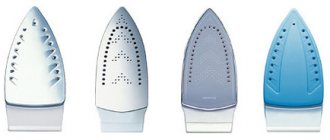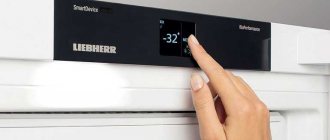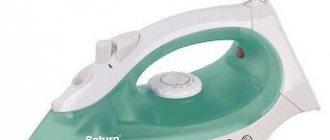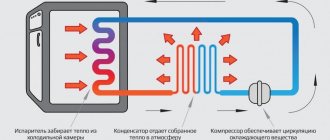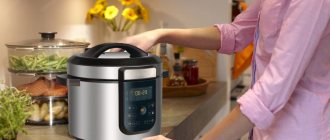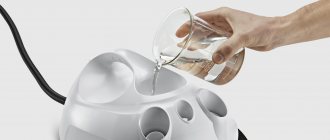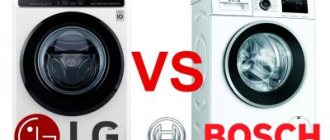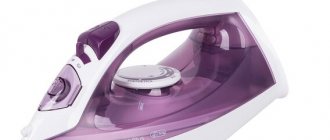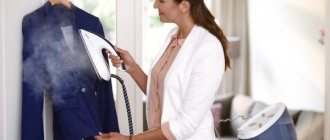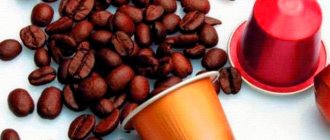Temperature modes: deciphering the points on the temperature controller
If you choose the wrong ironing mode, nylon or chiffon fabric can be singed through, while linen or cotton fabric will remain wrinkled. So that the user can select the desired temperature, the iron is equipped with a “handle” or “rotary wheel” that regulates the thermostat. Images corresponding to a certain temperature regime were applied to the handle. In most cases these are points. The more there are, the higher the heating temperature of the sole surface.
The selected temperature regime must comply with the rules for caring for the item. For user convenience, they are printed on product labels in the form of pictures. The graphic rules also have repeated dots: one, two or three. Such images are not random, each means a certain ironing mode.
The single mode means that the heating temperature allows you to iron fabrics that require delicate care:
The material will be exposed to temperatures up to 110 ˚С.
Sometimes there is an inscription “nylon”, “silk” nearby, confirming the choice of the most delicate mode.
To perfectly iron more heat-resistant fabrics, you will need to set the wheel to 2 points. This temperature mode is suitable for:
The exposure temperature will be up to 150˚С . You can often find the designation “wool” (for wool) nearby.
At this t, steam ironing is possible.
The following fabrics require maximum heating when ironing:
Thermal exposure reaches 200 ˚С . The ironing process is made easier by the possibility of exposure to steam.
What do the rest of the heat treatment symbols mean?
Other modes are presented in the table:
| You can iron the fabric |
| Ironing is possible only at a temperature not exceeding 140˚C. If there are no markings on the device, you should install the wheel in the center. The temperature will correspond to 130-140˚С |
| It is prohibited to use an iron for ironing |
| It is forbidden to use steam treatment to smooth things out. |
Although there are no such signs on the electrical appliance itself, they make it clear whether it is worth turning on the steam and how many “points” to stop at when ironing.
How to set the temperature correctly depending on the type of fabric
For each fabric there is an optimal ironing temperature, which is indicated by the manufacturer on the label. To ensure that ironing is always as efficient as possible, it is important to be able to decipher these icons.
| The product can be ironed at any temperature. |
| Ironing at high temperatures up to 200 °C. |
| Found on products made from polyester and polyacrylonitrile fabrics. The maximum temperature is 140 °C. |
| This icon indicates that the product is made of delicate fabric, which should be ironed at a temperature not exceeding 130 °C. |
| The temperature should not exceed 110 °C. Found on things made of polyamide, acetate, nylon, viscose. |
| Do not iron or steam. |
| You can iron it, but you cannot steam it. |
You can learn how to iron things made from various fabrics from the video:
Iron temperature in degrees
In temperature-controlled devices, the “points” correspond to a certain temperature (data in the table)
| Thermal mode of the iron | Minimum t (˚С) | Nominal t (˚С) | Maximum t (˚С) |
| ⚫ | 75 | 95 | 115 |
| ⚫⚫ | 150 | 130 | 155 |
| ⚫⚫⚫ | 145 | 175 | 205 |
The heating of a household iron within the soleplate can vary by 10 °C.
How many degrees does the iron heat up to?
For fabrics that are most difficult to iron, it is necessary to use a maximum iron heating temperature in degrees equal to 205˚C. In this case, the heating rate will depend on the type of material from which the sole of the iron is made, and the power of the electrical appliance.
Heating rate depending on sole material
The sole is made from:
- Aluminum. Heating occurs very quickly, and cooling also occurs, but the material is short-lived. Hard elements on clothing can leave scratches in which burnt-on fabric particles become embedded.
- Of stainless steel. It heats up quickly, glides well over the surface, and is durable. The disadvantage is the heavy weight of the device.
- Ceramics. This coating is applied to a metal base. It glides perfectly, allows you to iron fabric in hard-to-reach places, and does not catch clothes. Heating and cooling take longer. Ceramic retains heat, so even when turned off, the iron remains on for 8-10 minutes. stays hot. The disadvantage is the fragility of ceramics, susceptibility to chips and damage. To extend service life, manufacturers use cermets.
- Teflon - reliably protects clothes from burning, but does not last long. The Teflon surface does not glide well over fabric, making ironing difficult.
- Sapphire is a specially developed alloy that gives the sole extra strength. Conducts heat well.
- Titanium is rarely used in the production of household irons. The metal will heat up quickly and take a long time to cool down. The surface strength is not inferior to steel.
Maximum temperatures in different models may vary, so before choosing a mode, you should read the instructions.
If the iron has only one heating mode, there is no spray and steam function, the temperature of the iron sole will be 115˚C (±10).
Irons with a drip system are slightly hotter - about 155˚C.
Electrical appliances with the possibility of steam processing reach temperatures of 175-205 ˚C.
Influence of electrical appliance power
The speed of heating the surface, the possibility of supplying a “cloud” of steam, and the speed of cooling of the sole directly during ironing depend on the power of the iron.
How to find out the temperature of the iron
The easiest way to find out the temperature of the iron is by points. However, it happens that during delicate ironing the item “burns”, or at maximum mode the sole remains not hot. Perhaps the reason is a broken thermostat. You can check the heating temperature of the iron by using high-temperature thermometers. It is enough to purchase a digital or mechanical device that allows you to measure temperatures up to 300 ° C, because it does not go higher in irons. The cost of meters is from 200 rubles. More expensive are infrared pyrometers (from 1000 rubles), which allow you to measure temperature without direct contact with the object. Such a device is useful for measuring t of liquids, food, electric heating devices and other objects.
There are also “folk” verification methods:
- Spray the iron and wait until it sizzles. This means that the temperature is above 100˚C.
- Iron natural wool. If the villi have become dry and brittle, the temperature is close to 105 °C, and if an unpleasant smell of burnt hair appears, the heating has reached 120 °C.
In order not to risk your favorite things, it is important to know exactly what temperature the soleplate of the iron has reached. It is better to experiment and purchase a device with a thermostat, follow the instructions for use, and study the labels on clothes before ironing. If you suspect a breakdown, measure t using a special thermometer and repair the electrical appliance using the warranty card.
Recommendations for choosing ironing temperature for different fabrics
There is often a situation where there is no label with care instructions on items. In these cases, practical advice will come in handy.
Linen
The item must first be turned inside out and ironed at a temperature of 180-200 °C. The best results are achieved when the fabric is damp. During the ironing process, do not be afraid to apply pressure to the iron and use steam.
If the item contains an admixture of cotton, then the iron should not be heated above 180 °C. It is worth considering that decorative elements (for example, embroidery) are often made of synthetic materials, so they should be ironed only from the inside out.
What to do if the material is very dense and cannot be ironed properly? Such items are additionally ironed on the front side, possibly at the same temperature, but always through gauze. If the product is starched, then the temperature must be reduced by 10 - 20 degrees.
Wool
Wool does not tolerate high temperatures, so the optimal temperature for it is 100 – 120 °C. This applies to woven wool, and it is better not to iron knitted items at all. If you really want to iron your favorite sweater, then you need to do it from the inside out, without pressing the iron, so as not to stretch the material. A drape coat is ironed at 140 -170 °C, always with steaming.
Cotton
This material should be ironed at a temperature of 170 - 180 degrees. Like linen, it is better to process cotton when it is not yet completely dry, or to pre-moisten it with a spray bottle. Steaming can be used.
Silk
This is a very delicate material that should be ironed as carefully as possible. It does not tolerate temperatures above 60 - 80 ° C, as well as steaming. If it becomes necessary to iron through fabric, then you should use thin cotton, but not gauze (it can leave unsightly marks on a silk product). When processing through fabric, the temperature can be increased by 20 °C.
Viscose
The maximum temperature is 120 °C, light steaming is allowed.
Knitwear
Temperature – medium or minimum. To avoid stretching the fabric, it is better to steam knitwear in a vertical position instead of ironing.
TESTING OF ELECTRIC IRONS – 2012
Testing of electric irons in Rostest-Moscow for the “Test Purchase” program has been ongoing for 5 years now, and it is interesting to consider the history of the examination of their quality in its development.
This time, the irons are called “on the carpet”, that is, on the ironing board:
IRONS PRESENTED IN COMPARATIVE TESTS - 2012
with non-stick coating with power up to 2150 W costing up to 2000 rubles
As you can see, all the “faces” are recognizable. Well known from the trials of past years. The Tefal iron and the Vitek iron became test participants 4 times, the Panasonic iron, the Bosch iron and the Philips iron for the third time, and the moulinex iron for the second time.
So we have an amazing opportunity to track how the quality of electric irons changes over time. And what?
Let's start with the bells and whistles. What do brands promise us?
All irons are equipped with a “spray” function, which allows you to precisely direct water to individual folds. Everyone, but not Panasonic, promises a steam boost of varying intensity. But the Panasonic iron is distinguished by the presence of an anti-scale protection system, while the others can only boast of a self-cleaning system. All are equipped with a steam regulator. But if everyone has 3-4 levels, then the vitek iron offers the consumer... as many as 13! With the exception of Tefal, all irons have a vertical steam function. And the pointed “nimble” nose of the Philips iron promises to make the most intimate corners of especially complex-cut items accessible for ironing.
What is the temperature of the steam coming out of the iron?
First, let's divide everything
ricks” (emphasis on the letter “
a
”) into types and types, and then we will analyze the features of care and operation.
They come in different shapes, brands, designs, with different “odds” such as a weather forecast on Venus, or a news feed on the lid of the tank, but in fact only a few types
according to
the principles of operation,
which consist in
the method of producing steam
.
Each manufacturer usually provides a wide range of all existing types
and, for advertising, adds features that I called “odds” above.
What do the numbers or dots on the electric iron panel mean?
The power of the iron affects the heating temperature of its soleplate, as well as the heating speed. For modern home models, the power is usually in the range of 1400-1900 W (1.4-1.9 kW ) . The most common power is considered to be 1400-1500 W (1.4-1.5 kW), which is quite suitable for ironing jeans or shirts.
The temperature range is usually marked with dots or numbers on the iron panel.
One dot or number 1 on the panel indicates:
- The maximum temperature is 115C.
- Minimum temperature – 75C.
- Nominal - 95C.
What material are the soles made of?
In order for the ironing result to be ideal, the soleplate of any electric iron must be heated evenly. Devices with ceramic surfaces have this ability. There are also irons with metal (aluminum, steel, cast iron) soles. They are characterized by good glide, good heat capacity, and strength.
Most modern irons have built-in thermostats, tubular electric heaters (TEHs) and signal lamps. More expensive models are equipped with steam humidifiers. However, all this functionality has no practical effect on the heating temperature of the soleplate of the electric iron. So in order to determine what temperature to set for ironing things, it is better to focus on the above ranges.
About optimal temperature conditions
Each type of fabric has its own ironing modes, allowing you to bring your clothes into decent shape without harming them. All iron models are now equipped with a temperature control function based on the type of fabric. And for this you need to know at what temperature this or that thing should be ironed.
If there are no labels, but the material from which this item is made is known, you can use general recommendations. Knowing the maximum and minimum heating temperatures of the iron sole (205 and 78, respectively), and having an understanding of the material of the product, you can easily select the optimal mode for ironing.
Table of ironing temperature conditions for various types of fabrics
| Textile | Temperature | Steam | Iron pressure | Fabric Features |
| Pure cotton | 140 – 170 degrees | wet steam | ironing with high pressure iron | needs hydration |
| Cotton with polyester added | 110 degrees | small amounts of steam | ordinary | see cotton, polyester |
| Polyester | temperature mode “minimum” or “silk” | no steam | lung | iron with a slightly heated iron, because the material melts easily |
| Products with a compressed effect | 110 degrees | no steam | ordinary | — |
| Viscose | 120 degrees, temperature mode “silk” | a little steam | ordinary | Viscose should not be wetted as there is a high risk of water stains. Iron slightly damp viscose only from the wrong side or through a wet thin fabric from the wrong side. |
| Cotton and linen fabric | 180 degrees | a lot of steam | strong iron pressure | see cotton, linen |
| Linen fabric | 180-200 degrees | a lot of steam | strong pressure | linen should be ironed with a hot iron from the inside out, using a humidifier |
| Silk | 60-80 degrees | — | ordinary | Silk is looked at with a dry iron, through a thin damp cloth, but not gauze (it will leave marks); iron along the grain (vertically) to avoid stretching the product. When ironing, do not add additional moisture - stains will remain. |
| Nylon | The only thing better is the ferry. But if the need arises, iron carefully at 60-80 degrees | ironing with vertical steam | — | After washing, nylon usually does not need to be ironed. The material may melt: all nylon items are very sensitive to heat |
| Chiffon | 60-80 degrees, gentle ironing at low temperature | no steam | light iron pressure | Do not spray clothes with a spray bottle (the water may leave stains). Iron through damp gauze. The soleplate of the iron should be smooth and free of adhering particles - there may be puffs left on delicate fabric. |
| Wool and wool mixture | 100-120 degrees through fabric | vertical steaming of wool is preferable to ironing | lung | - ironing wool through a damp cotton cloth. - steam embossed items. - do not iron fluffy woolen items. |
| Denim fabrics | Rough: 180-200 degrees, Soft cotton jeans: 150 degrees | steam | strong | Jeans should be ironed from the wrong side when they are still slightly damp. From the front side - through gauze or fabric. |
| Tweed | 140-170 degrees from the wrong side through a damp cloth | a lot of steam | — | It is better not to iron this type, but to steam it with a vertical steamer |
| Drape | 140-170 degrees, but better with a steam iron or a steam cleaner | a lot of steam | — | difficult to iron, better to steam |
| Chintz | 140 – 170 degrees, use steam iron at max. temperatures | a lot of steam | strong pressure | iron from the front side, after moistening |
| Terry fabrics (towels, sheets, bathrobes) | do not iron | — | — | ironing becomes tough and does not absorb moisture well |
| Knitwear | minimum or average temperature | correctly steam knitwear with a steam iron in a suspended position | do not press so as not to crush the fibers | It is necessary to iron in the direction of the loops from the wrong side |
Ironing temperature
always set depending on the type of fabric. It is better to start with minimum temperatures, increasing as necessary to the maximum value.
Many manufacturers anticipate housewives’ doubts in choosing the ironing temperature and instead of degrees write hint phrases on the iron relay: “cotton”, “linen”, etc. And if you put the iron in steam mode, fewer wrinkles will remain on the fabric.
Be sure to run the iron a couple of times over any fabric - in case there are stains and water marks on the sole of the iron, which can accidentally be transferred to your item of clothing.
First of all, pay attention to the labels of the clothes - they contain all the information about caring for the product: how to wash, how to dry and, finally, at what temperature to iron:
The label is lost - no problem, the table of ironing modes will tell you at what temperature a particular fabric should be ironed:
